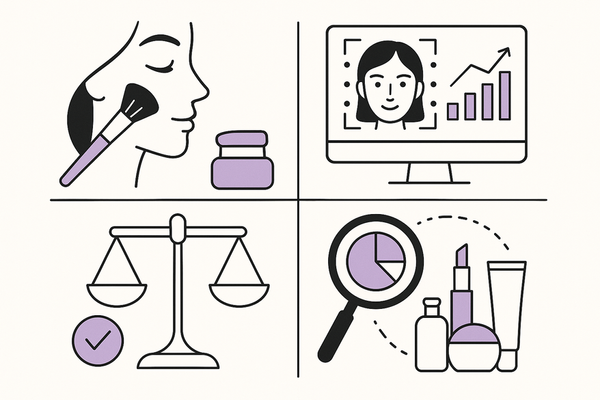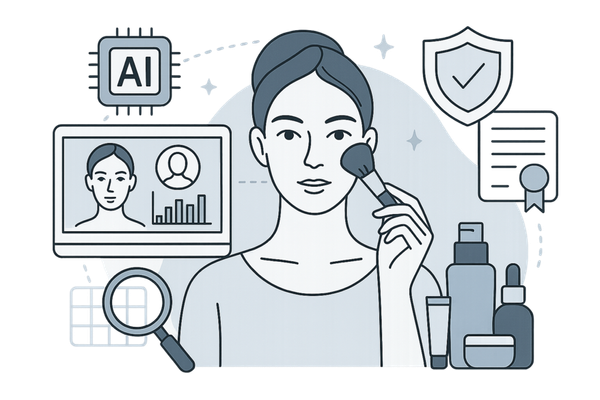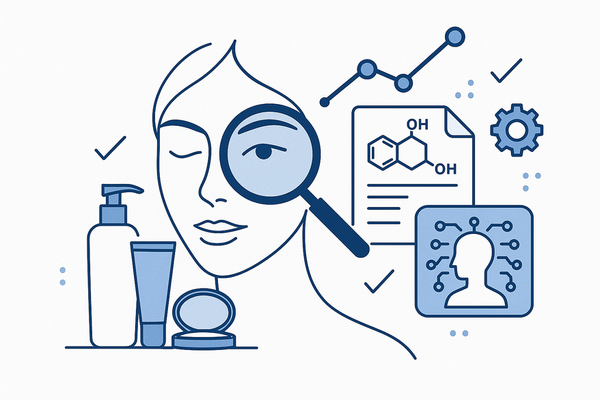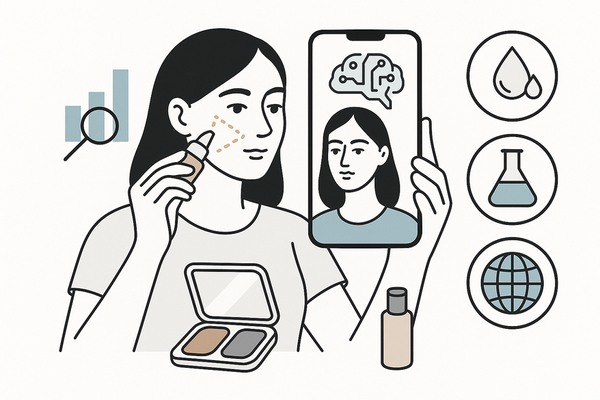Ethical Makeup App Practices: A Guide to Transparency, Privacy, and Inclusive Beauty Tech
Explore ethical makeup app practices that prioritize transparency, privacy, and inclusivity, fostering trust and user safety while enhancing beauty tech experiences.
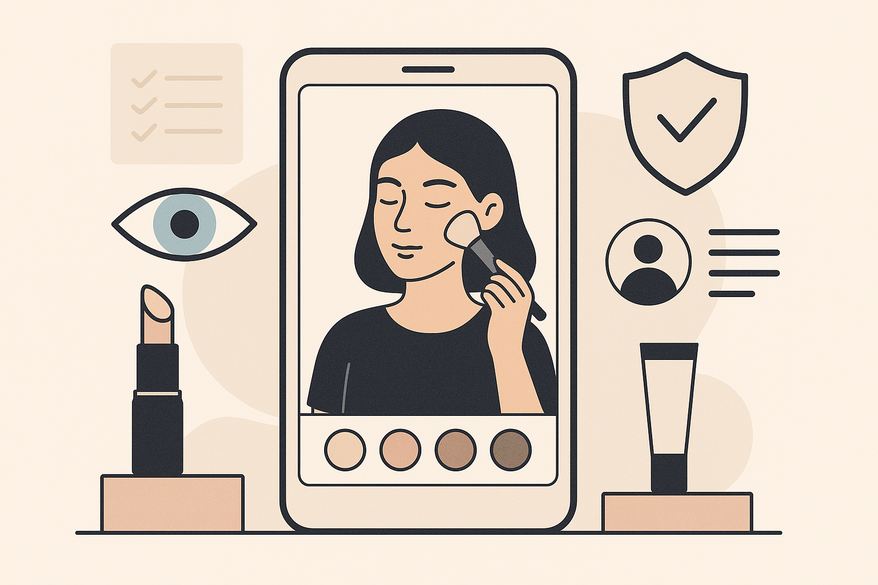
Estimated reading time: 8 minutes
Key Takeaways
- Implement transparent data handling with clear consent flows and privacy notices.
- Prioritize privacy protection using encryption, anonymization, and secure storage.
- Avoid exploitative ads and dark-pattern UX while ensuring truthful product representation.
- Mitigate algorithmic bias by diversifying datasets and auditing regularly.
- Foster trust and inclusivity through honest virtual try-ons and diverse beauty standards.
Table of Contents
- What Constitutes Ethical Makeup App Practices?
- Why Ethical Makeup App Practices Matter in Beauty App Design and Development
- Key Issues and Challenges in Ethical Makeup App Practices
- Real-World Examples & Case Studies of Ethical Makeup App Practices
- Roles in Promoting Ethical Makeup App Practices
- Key Takeaways & Actionable Tips for Ethical Makeup App Practices
- Conclusion
What Constitutes Ethical Makeup App Practices?
Ethical makeup app practices center on four core principles. Each practice builds fair, honest, and safe experiences for users.
- Transparent user data handling
- Clearly inform users what personal data is collected (e.g., photos, preferences).
- Explain how data will be used (improve filters, personalize content).
- Obtain informed consent with straightforward language and opt-in checkboxes.
- Privacy protection
- Encrypt data in transit and at rest using industry-standard methods. AI beauty app privacy concerns
- Store personal information securely with access controls.
- Anonymize user profiles to remove identifiable markers. protecting personal makeup data
- Non-exploitative advertising
- Clearly label ads and sponsored content so users distinguish marketing from features.
- Avoid dark-pattern UX that tricks users into purchases or data sharing.
- Make promotional claims truthful, avoiding exaggerations about results.
- Honest product representation
- Use virtual-try on algorithms calibrated with real product tests.
- Show true-to-life color matches, texture, and finish.
- Disclose limitations of simulation (lighting, device screen differences).
Why Ethical Makeup App Practices Matter in Beauty App Design and Development
Ethical makeup app practices shape user well-being and brand trust. They offer positive social impact and reduce risk.
- Builds long-term user trust and loyalty
- When data handling is clear and secure, users return to apps and refer friends.
- Transparent processes foster positive word-of-mouth.
- Reduces legal and reputational risks
- Clear consent and truthful claims help apps comply with data protection laws (GDPR, CCPA).
- Honest marketing avoids fines, litigation, and negative press.
- Promotes social responsibility and inclusive beauty standards
- Inclusive design challenges harmful stereotypes and broadens representation.
For a real-world example of transparent and privacy-focused design, check out Makeup Check AI, which emphasizes clear data practices and user control.
Key Issues and Challenges in Ethical Makeup App Practices
Even with best intentions, beauty apps face hurdles. Addressing these challenges is vital for fair and inclusive technology.
- Biased algorithms
- Definition: Makeup simulation and facial recognition trained on limited demographics.
- Impact: Users with darker skin tones or unusual facial features get poor matches or wrong filters.
- Mitigation: Diversify training datasets to include varied ages, genders, ethnicities; run regular bias audits.
- Unfair representation of beauty standards
- Definition: Western-centric ideals dominate filter designs and product suggestions.
- Impact: Feeds narrow definitions of beauty, excludes many users and can hurt self-esteem.
- Mitigation: Include global skin tones, facial proportions, and cultural aesthetics in design testing. multicultural makeup AI
- Influencer marketing risks
- Definition: Filters or ads promoting unrealistic looks under “sponsored” guise.
- Impact: Users may feel pressured to buy products or feel inferior to edited influencer images.
- Mitigation: Require clear disclosure of sponsorship; limit extreme filter effects; educate followers.
Real-World Examples & Case Studies of Ethical Makeup App Practices
Concrete examples show how ethical makeup app practices work in real apps.
Case Study 1: Haute Minute Makeup
• Cruelty-free and vegan principles in product sourcing.
• Transparent ingredient labels and supply-chain disclosures.
• User education on clean beauty benefits and safe application.
Research: what does it mean to be cruelty-free
Case Study 2: XJ BEAUTY
• Strict transparency in ingredient sourcing, with non-toxic formulas.
• Clear in-app notes on how each ingredient affects skin health.
• Honest virtual try-on simulations calibrated against lab-tested swatches.
Research: how clean beauty makeup production combines ethics with effectiveness
Roles in Promoting Ethical Makeup App Practices
Ethical makeup app practices require collaboration. Below are the main roles and responsibilities.
Developers
• Design inclusive, bias-audited algorithms with diverse training data.
• Provide clear privacy policies and transparent data-use notices.
• Implement non-manipulative UX and honest ad disclosures.
• Conduct regular security and bias audits to maintain user trust.
Research: ethical practices in clean beauty
Consumers
• Choose apps with transparent data policies and strong privacy controls.
• Demand inclusive beauty representations (wide range of skin tones, face shapes).
• Provide feedback on biased filters or misleading ads.
• Support brands that align with ethical principles through reviews and social shares.
Research: ethical beauty on the cosmetics industry
Key Takeaways & Actionable Tips for Ethical Makeup App Practices
Applying these tips helps both users and developers put ethics into action.
Tips for Users
- Demand transparent privacy statements – Read clear explanations of how apps collect and use your data to stay safe. what does it mean to be cruelty-free
- Support apps with diverse beauty standards – Choose apps that show many skin tones and features so everyone feels included. how clean beauty makeup production combines ethics with effectiveness
- Verify sponsored content disclosures – Look for clear “ad” labels on filters or posts to avoid being misled. ethical practices in clean beauty
Tips for Developers
- Regularly audit algorithms for bias – Test models on diverse groups to ensure fair results for all users. ethical practices in clean beauty
- Ensure honest virtual try-ons and marketing – Calibrate simulations with lab-tested products and label any limitations. how clean beauty makeup production combines ethics with effectiveness
- Educate users about data collection and protection – Use simple in-app messages explaining what data is gathered and why. what does it mean to be cruelty-free
Conclusion
Ethical makeup app practices are key to building user trust, promoting inclusive beauty, and ensuring long-term success in the beauty tech space. Developers should adopt transparent data handling, honest simulations, and bias audits. Users can support these apps by demanding clear privacy policies and diverse representations. Together, we can push the beauty app industry toward a fairer, safer future.
FAQ
- What is a bias audit in makeup apps?
A bias audit involves testing algorithms on diverse demographics to identify and correct unfair outcomes. - How can users verify an app’s privacy claims?
Check for clear privacy policies, opt-in consent flows, and third-party security certifications. - Why is honest virtual try-on important?
It ensures realistic expectations, reduces product returns, and fosters trust in brand promises. - What steps do developers take to protect user data?
They encrypt data, anonymize profiles, implement access controls, and conduct regular security audits.

